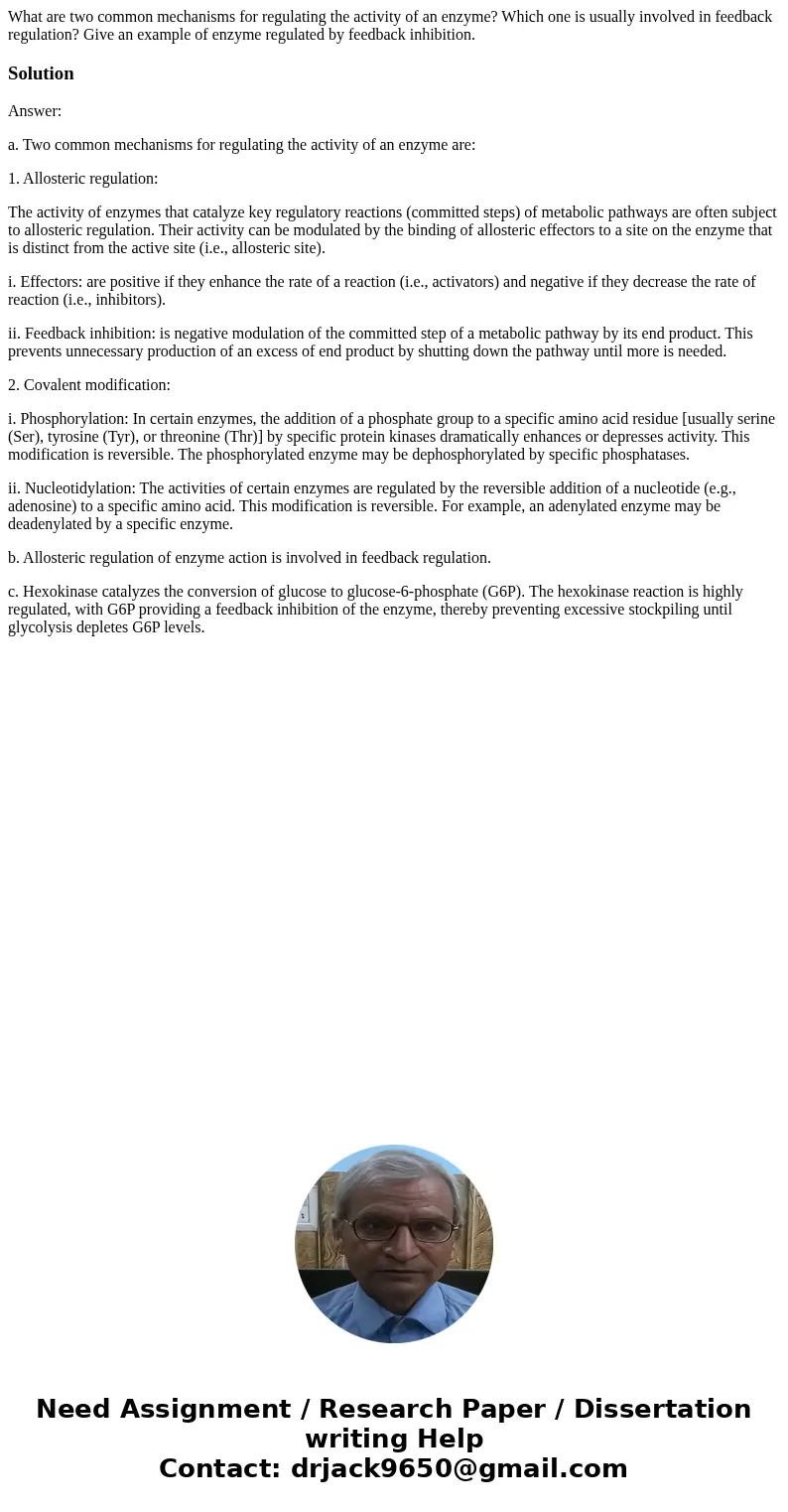What are two common mechanisms for regulating the activity o
What are two common mechanisms for regulating the activity of an enzyme? Which one is usually involved in feedback regulation? Give an example of enzyme regulated by feedback inhibition.
Solution
Answer:
a. Two common mechanisms for regulating the activity of an enzyme are:
1. Allosteric regulation:
The activity of enzymes that catalyze key regulatory reactions (committed steps) of metabolic pathways are often subject to allosteric regulation. Their activity can be modulated by the binding of allosteric effectors to a site on the enzyme that is distinct from the active site (i.e., allosteric site).
i. Effectors: are positive if they enhance the rate of a reaction (i.e., activators) and negative if they decrease the rate of reaction (i.e., inhibitors).
ii. Feedback inhibition: is negative modulation of the committed step of a metabolic pathway by its end product. This prevents unnecessary production of an excess of end product by shutting down the pathway until more is needed.
2. Covalent modification:
i. Phosphorylation: In certain enzymes, the addition of a phosphate group to a specific amino acid residue [usually serine (Ser), tyrosine (Tyr), or threonine (Thr)] by specific protein kinases dramatically enhances or depresses activity. This modification is reversible. The phosphorylated enzyme may be dephosphorylated by specific phosphatases.
ii. Nucleotidylation: The activities of certain enzymes are regulated by the reversible addition of a nucleotide (e.g., adenosine) to a specific amino acid. This modification is reversible. For example, an adenylated enzyme may be deadenylated by a specific enzyme.
b. Allosteric regulation of enzyme action is involved in feedback regulation.
c. Hexokinase catalyzes the conversion of glucose to glucose-6-phosphate (G6P). The hexokinase reaction is highly regulated, with G6P providing a feedback inhibition of the enzyme, thereby preventing excessive stockpiling until glycolysis depletes G6P levels.

 Homework Sourse
Homework Sourse